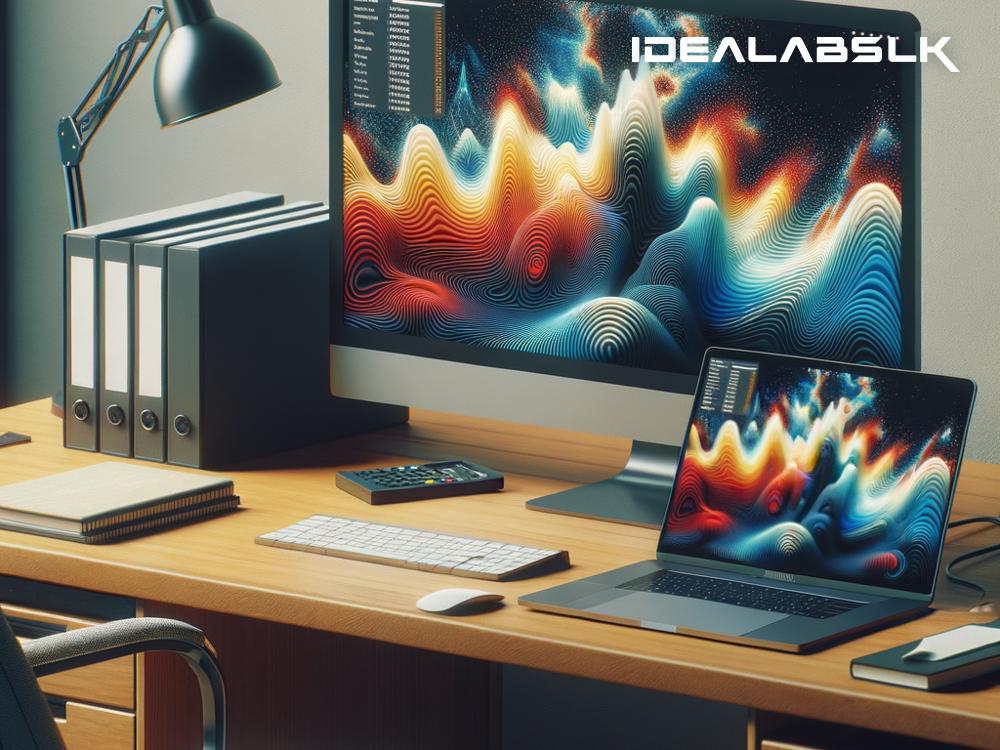If you've ever connected an external monitor to your computer, only to find that the picture doesn't fill the screen or the resolution looks downright lousy, you know how frustrating it can be. You know your shiny monitor is capable of beautifully crisp images, yet what you're seeing is a fuzzy mess that barely fills two-thirds of the screen. Don't fret! This common issue has several straightforward fixes that can have you enjoying your full screen real estate in no time. Let’s dive into how you can resolve the 'External Monitor Not Showing Full Resolution' problem with some easy steps.
1. Check the Cable Connections
First things first, ensure your cables are properly connected. A loose cable can often be the culprit of many display problems. Ensure that your HDMI, DisplayPort, DVI, or VGA cables are securely connected to both your computer and the monitor. Sometimes, just unplugging and plugging the cables back in can solve the issue. Dust or dirt can also interfere with the connection, so giving the ports a quick blow or clean can help too.
2. Verify Your Monitor’s Capabilities
Make sure your expectations align with what your monitor can actually do. Check the specifications of your monitor to confirm the maximum resolution it supports. You might be trying to force a resolution that your monitor can’t display. You can usually find this information in the monitor's manual or by searching for the monitor's model number online.
3. Update or Reinstall Your Graphics Drivers
Outdated or corrupted graphics drivers can cause all sorts of display issues, including preventing your monitor from displaying its full resolution. To update your drivers, you can visit the website of your graphics card manufacturer (NVIDIA, AMD, Intel, etc.) and download the latest drivers for your model. If you're not sure, you can find which graphics card you have by going to your device manager (right-click on the Start menu for Windows users) and looking under "Display Adapters."
Installing the latest drivers often involves just a few clicks. If updating doesn't help, you might want to try completely uninstalling and then reinstalling your graphics drivers. This can help clear out any corrupted files that might be causing issues.
4. Adjust Display Settings
Sometimes, the solution is hiding in your computer's display settings.
For Windows users, right-click on your desktop and select "Display settings." Here, you'll see a drop-down menu under "Display resolution." Make sure it's set to the recommended setting, which should be the highest resolution your monitor supports.
Mac users can click on the Apple menu, choose "System Preferences," then "Displays," and finally "Display." Here, you can choose the "Default for display" option, which should select the best resolution for your monitor. If not, similar to Windows, you can manually select a higher resolution.
5. Check Your Monitor’s OSD Menu
Many monitors come with an On-Screen Display (OSD) menu that allows you to adjust various settings directly on the monitor. Sometimes, the monitor itself might be configured to display at a lower resolution. Use the buttons on your monitor to access the OSD menu and navigate to the resolution settings. Make sure it’s set to the monitor’s native or recommended resolution.
6. Use GPU Scaling Options
For those whose monitors are still stubbornly refusing to display the full resolution, tweaking your GPU's scaling options might do the trick. NVIDIA, AMD, and Intel graphics solutions all offer control panels that let you adjust how the image is scaled on the monitor.
For example, in the NVIDIA Control Panel, you can navigate to "Display" and then "Adjust desktop size and position." Here, you can select "Full-screen" under Scaling and ensure that the "Perform scaling on:" option is set to "GPU."
Wrap-Up
Not being able to enjoy the full quality and resolution of your external monitor can be a drag, but as we've seen, there are multiple ways to troubleshoot and solve this issue. From simple cable checks and setting adjustments to driver updates and scaling options, these steps should help most users get their displays looking crisp and filling the screen as intended.
Remember, always start with the simplest solutions first – check those cables and settings – before moving on to more advanced troubleshooting. Happy computing, and enjoy your beautiful, full-resolution display!

